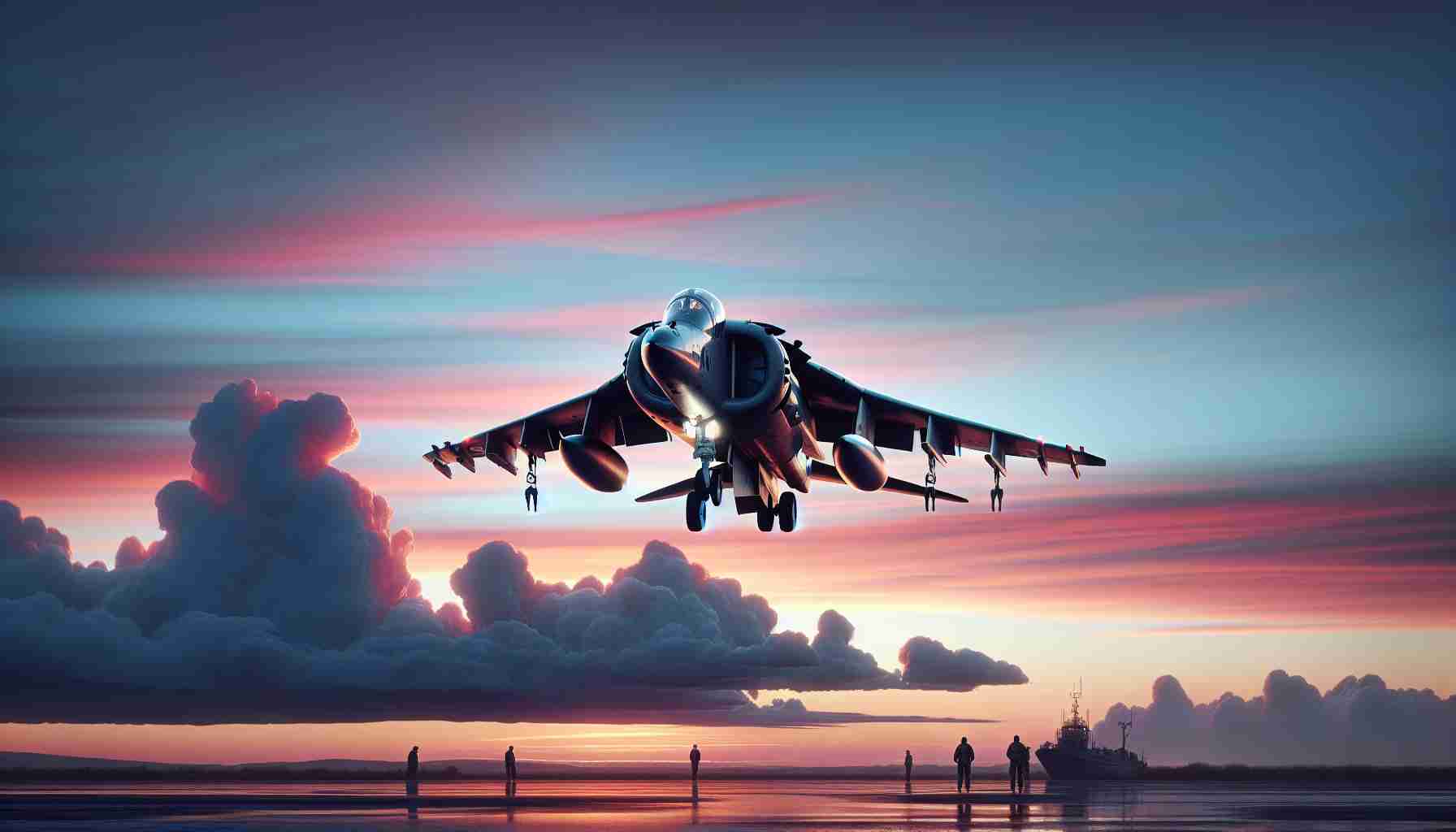Fleet Readiness Center East (FRCE) has marked a significant milestone by completing the final sustainment operation for the US Marine Corps’ AV-8B Harrier II, setting the stage for the aircraft’s retirement two years ahead of schedule. This culmination underscores FRCE’s comprehensive role in overseeing the maintenance and technical oversight of aviation assets used by naval and expeditionary forces.
The last Harrier was handed over in an informal ceremony to the Marine Attack Squadron 223. This unit, located at Air Station Cherry Point, is responsible for managing operations involving fixed-wing combat aircraft. Originally achieving operational status in 1971, the AV-8B Harrier II is now being replaced by the advanced F-35 Lightning II, a transition marking the dawn of a new era in military aviation.
The Commanding Officer of FRCE, Capt. Randy Berti, expressed immense pride in the center’s legacy. Over the past fifty years, FRCE has been pivotal in supporting the Harrier project, benefiting both the US Marine Corps and international allies. Thanks to the relentless efforts of several generations of FRCE staff, the program has reached numerous accomplishments.
As the marines embrace the cutting-edge F-35 technology, FRCE is poised to continue offering support for these modern platforms. Mike Stewart, the supervisor of Aircraft Overhaul and Repair at FRCE, emphasized the importance of adapting to new technology and strategies to remain competitive.
With its robust capabilities and a rich history, the AV-8B Harrier II leaves a remarkable legacy as it makes way for next-generation technology in military aviation.
The End of an Era: How the AV-8B Harrier II’s Retirement Impacts Global Military Dynamics
The retirement of the AV-8B Harrier II marks a significant shift not only in the U.S. military aviation landscape but also for allied nations and global defense strategies. While Fleet Readiness Center East’s (FRCE) recent completion of the last sustainment operation for this iconic aircraft highlights the end of a five-decade chapter, the broader implications are profound. Let’s delve into the uncharted territories affected by this transition.
A Global Influence: The Harrier’s Footprint Worldwide
The Harrier was not just pivotal for the U.S. Marine Corps but also served several allied countries including the United Kingdom, Spain, and Italy. Its unique vertical/short takeoff and landing (V/STOL) capabilities made it an adaptable force in various terrains and settings. Consequently, its retirement prompts these nations to reassess their aerial defense strategies and procurement plans to ensure seamless operational capability.
The Looming Challenge: Transitioning to the F-35 Lightning II
Replacing the Harrier with the F-35 Lightning II introduces both exciting advancements and logistical challenges. While the F-35 boasts stealth capabilities, advanced sensors, and superior performance, its integration requires substantial training, infrastructure, and budget adjustments. These considerations are crucial for nations incorporating the F-35 into their fleets, necessitating a period of transition and adaptation.
Advantages and Disadvantages
Advantages:
– Technological Leap: The F-35 offers unmatched situational awareness and connectivity, providing a significant strategic advantage.
– Interoperability: Enhanced communication systems allow for seamless operations within coalition forces during joint missions.
Disadvantages:
– Costly Commitment: The F-35 comes with a hefty price tag, both in terms of acquisition and maintenance.
– Complex Integration: Upgrading existing infrastructure to accommodate this advanced aircraft can strain defense budgets.
Impact on Military Personnel and Communities
For military personnel, transitioning to new technology often involves intensive training to master sophisticated systems. This requirement could lead to temporary operational setbacks or reliance on transitional platforms. Moreover, communities surrounding military bases may witness economic shifts as labor requirements adjust, affecting local businesses and employment rates.
Controversies and Considerations
The Harrier’s retirement and the F-35’s introduction have sparked debates over defense spending and the prioritization of military resources. Some argue that the F-35’s development faced numerous delays and cost overruns, questioning whether it offered the promised capabilities and performance.
What Does the Future Hold?
As advanced technologies continue to evolve, military forces worldwide must adapt to remain competitive. Will future aircraft continue focusing on human pilots, or will drone technology take the forefront? Furthermore, how will budget allocations shape the next generation of military assets?
For further exploration of defense technologies and their global impact, visit Lockheed Martin and Northrop Grumman.
In conclusion, the AV-8B Harrier II’s retirement not only signifies the close of an influential chapter in military history but also heralds the beginning of new challenges and opportunities for nations worldwide. As the world braces for these changes, the ripple effects will undoubtedly shape defense strategies for years to come.







